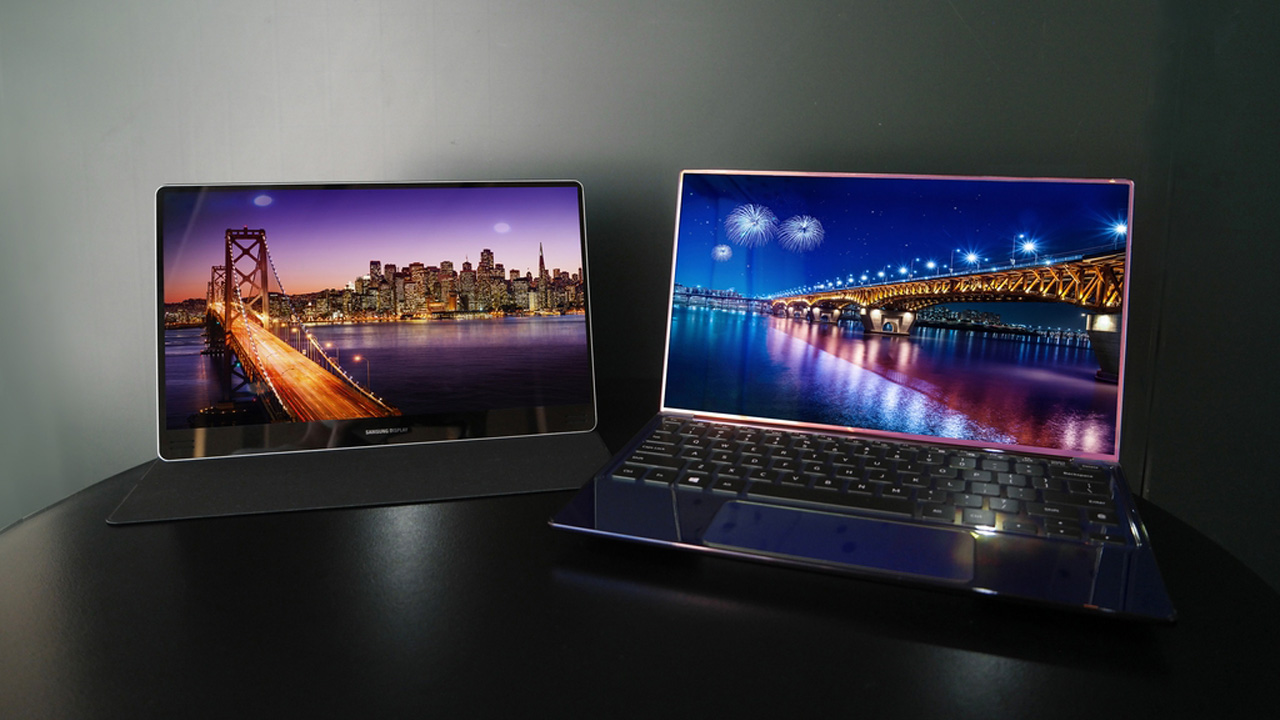Samsung says its new 90Hz OLED gaming laptop screens will rival standard 120Hz panels

Manufacturing of the 14-inch, high refresh rate OLEDs will begin in March in 'very large quantities'.
Samsung’s display subsidiary, the eponymous Samsung Display Co., has announced its intention to begin producing 90Hz OLED panels for laptop PCs starting in March. Although many gaming laptops now offer screens with much higher refresh rates, Samsung reckons 90Hz on a OLED panel makes for comparable performance in terms of response as 120Hz in LCD format.
According to DisplaySpecifications, the initial focus will be on 14-inch panels produced in ‘very large quantities’. It’s not clear what resolution the panels will offer. Other specifications such as peak brightness, colour coverage and any measures to mitigate the problem of OLED burn-in have likewise yet to be discussed.
As for the comparison between OLED and LCD regarding response, Samsung says that image blur at 90Hz on its OLED panel is comparable to that of an LCD running at 120Hz.
In many ways, OLED panels are particularly well suited to laptops. That’s because the effective per-pixel lighting of OLED is much more efficient than the typically full-panel backlighting of LCD. Even mini-LED LCD technology with thousands of local dimming zones is less efficient than OLED in that regard.
Your next upgrade

Best CPU for gaming: the top chips from Intel and AMD
Best graphics card: your perfect pixel-pusher awaits
Best SSD for gaming: get into the game ahead of the rest
As for how soon we can expect to see laptops with these new panels, it's unclear. With production of the panels starting in March, here's hoping availability later this year isn't too much to hope for.
The big question, of course, remains the nagging issue of OLED burn-in. That’s a problem that occurs when persistent images that remain on screen for extended periods, such as the Windows taskbar, cause sub-pixel degradation due to the lower endurance of the blue subpixels in an RGB OLED display. The net result is a ghostly and constant rendition of that persistent image, regardless of what is being displayed.
In our experience over several months of daily use of an OLED panel in an Alienware laptop, burn-in has not proved an issue. Whether that would continue to be the case over several years is a trickier question. But the response, outstanding contrast and efficiency of OLED certainly makes for an appealing proposition in a laptop.
Likewise, with microLED seemingly years away and mini-LED panels arguably still suffering from many of long-established shortcomings of LCD tech, OLED still has lots to offer. Moreover, Samsung's plans to produce the panels in 'large quantities' implies that they could be relatively affordable as opposed to reserved for only the most expensive lappies. A 90Hz OLED gaming laptop? Er, yes please.
